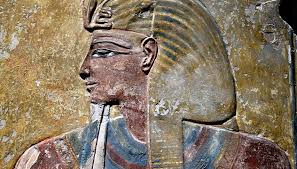In the annals of ancient Egyptian history, the name Seti I shines brightly as a testament to the power, wisdom, and architectural prowess of the New Kingdom era. Seti I, also known as Seti I Merneptah, ascended to the throne around 1290 BCE, marking the beginning of a reign that would leave an indelible mark on the history of Egypt. This article delves into the life, achievements, and enduring legacy of Pharaoh Seti I.
Early Life:
Seti I was born to Pharaoh Ramses I and Queen Sitre in a time of political instability. His father’s brief reign lasted only two years, and Seti I assumed the throne after his father’s death. Despite the challenges of his upbringing, Seti I demonstrated remarkable leadership qualities from a young age, which would serve him well during his reign.
Military Achievements:
Seti I is remembered as a military leader who sought to secure and expand Egypt’s borders. His campaigns in Nubia and Canaan were marked by strategic brilliance, consolidating Egyptian influence in these regions. Seti I’s dedication to the military might have helped strengthen Egypt’s position among neighboring nations.
The Battle of Kadesh:
One of the most notable military campaigns of Seti I was the Battle of Kadesh against the Hittites. Although not as renowned as the later Battle of Kadesh fought by his son Ramses II, Seti I’s campaign was significant in its own right. The conflict ultimately resulted in a peace treaty between Egypt and the Hittites, ensuring stability in the region for years to come.
Architectural Legacy:
Seti I’s reign is perhaps best remembered for its monumental architectural achievements. The pharaoh undertook extensive building projects, commissioning temples and monuments that would stand the test of time. The most famous of these is the Great Temple of Abydos, dedicated to the worship of Osiris, the god of the afterlife. The temple’s intricately carved reliefs and grandeur reflect the artistic and architectural prowess of Seti I’s era.
The Temple of Seti I at Karnak:
Seti I also contributed to the construction of the Karnak temple complex in Thebes, adding to the monumental legacy of his predecessors. The Hypostyle Hall, with its towering columns and elaborate decorations, stands as a testament to the grandeur of ancient Egyptian architecture during Seti I’s reign.
Legacy and Succession:
Seti I’s reign laid the foundation for the prosperity of the New Kingdom, and his son Ramses II would go on to become one of Egypt’s most iconic rulers. Seti I’s commitment to military strength, diplomatic prowess, and architectural splendor set a standard for future pharaohs.
Pharaoh Seti I, with his military triumphs and monumental constructions, left an enduring legacy that resonates through the corridors of ancient Egyptian history. As a visionary ruler, he navigated the challenges of his time with sagacity and determination, leaving behind a testament to the greatness of Egypt’s New Kingdom. Seti I’s contributions to the military, diplomacy, and architecture continue to captivate historians and archaeologists, providing a glimpse into the golden age of ancient Egypt.



Comment (0)